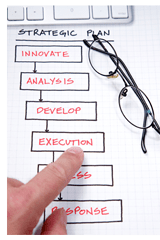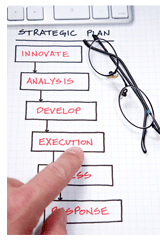Visibility helps to identify lean opportunities in reducing overhead and risks, while improving margins in the supply chain process. You could begin a visibility assessment by tracking a small portion of or specific supply chain events. With systematic testing backed by data, you can significantly lower your costs and improve your margins and efficiency.
It is difficult to improve visibility if you have a long and complex supply chain. This is why it is good to focus on a small portion first. When considering the enterprise architecture of your organization, some questions to consider are as follows:
What about the quality of data used to assess visibility?
At a high level, real-time decisions can only be made with real-time data. If you are a decision maker in your organization, reliance on historical data for business analytics may be getting you by, but in order to effectively meet customer demands and increase ROI, real-time operational intelligence is key.
Data quality is a combination of the right technology paired with the right management. The performance of your supply chain is dependent upon management’s ability to drive top-line and bottom-line improvements. Real-time supply chain event management and communications not only create a collaborative workspace and integrated communications, but also allow you to deliver higher quality results to suppliers and customers.
Thus, when considering improving your organization’s supply chain visibility, the quality of data is key. In addition to this, it is also important that management is equipped with the correct tools to decipher these metrics. Any software or technology solution can deliver data, but it takes sophisticated industry knowledge and the right software fit in order to ensure the success of a project.
Are you including knowledgeable consultants equipped with solutions in your project?
Even if you are not turning a blind eye on supply chain visibility, you may still be keeping the supply chain data all to yourself. However, there are consultants who could use that data to improve your supply chain process. Seek a second opinion on the data. You may think your systems are giving you the right information until another party shows you that may not really be the case.
When seeking a solution that encompasses the products from the supplier to consumer, at the end of the day, you want to make sure your investment can answer, “Will I be able to match projected demand?” Supply chain visibility means being able to provide these answers in a simple, easy to use interface that is responsive to your sales and operations processes. Even if you may not fully understand the intricacies of your organization’s processes, there are partners that are willing to identify the inefficiencies and deliver demand-driven solutions that not only give you supply chain visibility, but a leg up on the competition.
Your supply chain solution should include a senior industry professional, a detailed discovery requirements analysis, and a plan of action before proceeding. In addition to this, most assessments involve testing the application on an area of your organization one at a time, so that all processes are not entirely disturbed during integration. Ultimately, improving supply chain visibility should provide value to your organization, i.e. it should result in intelligence data that should form the basis of making informed decisions. Use business intelligence, share data with suppliers and customers, and strive to extend visibility within and outside your company.
Before taking steps forward with supply chain visibility projects, contemplate which information you and your organization will need in order to make wise decisions. Think about not only the data that you would like to be visible internally, but also the kind of data that your customers want. Ultimately, you’re creating an environment that, as Chris Jones from the Descartes System calls, “one version of the truth.”
 Have You Turned a Blind Eye on Your Supply Chain Visibility?">
Have You Turned a Blind Eye on Your Supply Chain Visibility?">

